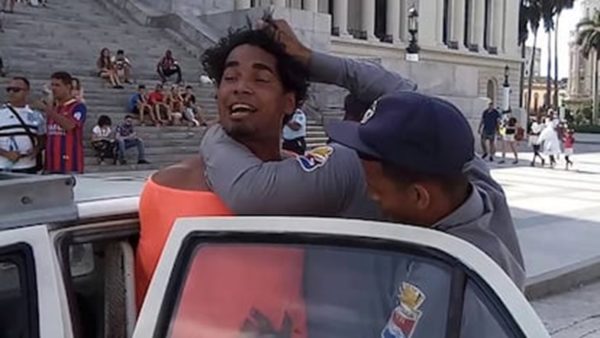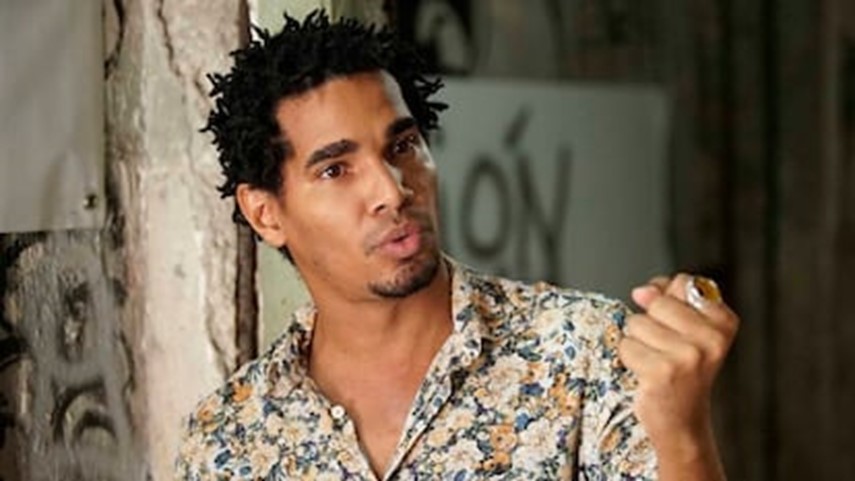Interview with El País newspaper of Spain: “Either a Martyr or Out of the Island”

As the third anniversary of the July 11 protests, the largest since the beginning of the Revolution, approached, the dissident artist spoke with EL PAIS.
By Carla Gloria Colome (El Pais)
HAVANA TIMES – Artist Luis Manuel Otero Alcantara has been given a few minutes to make his Tuesday call. He grabs a public phone at the maximum security prison of Guanajay, on the outskirts of Havana, and at 1:05 in the afternoon, the artist answers some questions for as long as the prison authorities allow him. Otero is Cuba’s most famous political prisoner, and according to him, “the most dangerous” for the government. When Cubans thought they couldn’t have a leader, tired of their own, the figure of Luis Manuel, a self-taught artist, emerged from the poor and black neighborhood of El Cerro.
His phrase “we are connected,” his defiant performances, his multiple police detentions, his hunger and thirst strikes, and finally the encampment in his house, the headquarters of the well-known San Isidro Movement, drew not only the attention of Cubans on the island but also of the entire exile community and part of the international community.
In September 2021, his face appeared among the 100 most influential personalities of Time magazine, alongside Russian opposition leader Alexei Navalny, pop star Britney Spears, tennis player Naomi Osaka, and Puerto Rican singer Bad Bunny. “His tireless struggle for freedom of expression and his uncompromising stance against autocracy reveal the power of resistance,” said Chinese artist Ai Weiwei in that publication. “His life, his behavior, and his expression together are so powerful that they can withstand the aesthetic and ethical degeneration of authoritarianism,” he added.

The last time Otero Alcántara walked the streets of Havana was on July 11, 2021. The date marks the largest anti-system protests to have taken place in Cuba since the Revolution came to power. Thousands of Cubans took to the streets, and thousands more ended up becoming political prisoners. Three years after his imprisonment, with a five-year sentence for alleged crimes of outrage against national symbols, contempt, and public disorder, Otero Alcántara clearly remembers the moment when the Cuban police charged against him on Prado Street as he was heading to join the demonstration, which he says was one of the happiest days of his life.
Do you have any particular memory of July 11, 2021, the last day before prison?
LUIS MANUEL OTERO: Yes, it had been a good week, we were working, organizing a sort of medical kit to bring medicines to Cuba due to COVID-19, and that day, like for many, I was also surprised to see so many people in the street. In fact, I thought what was happening was normal. At that time, it was relatively common for people to protest because there was no water, but they were small protests. That day, at the San Isidro Movement headquarters, many people were telling me: ‘Luis Manuel, call for it, call for it, call for it,’ and I really never believed I had that power to call as people think I do, and that’s when I went out to freedom.
I went out without a phone, disconnected from everything, until today. That was one of the happiest days of my life. In fact, when they arrested me and put me in a patrol car with three guards, the patrol’s radio was announcing: ‘Hey, thousands of people are coming down San Lazaro Street, thousands of people are coming down Trillo Park.’ And at that moment I said: ‘Good, now it’s re


